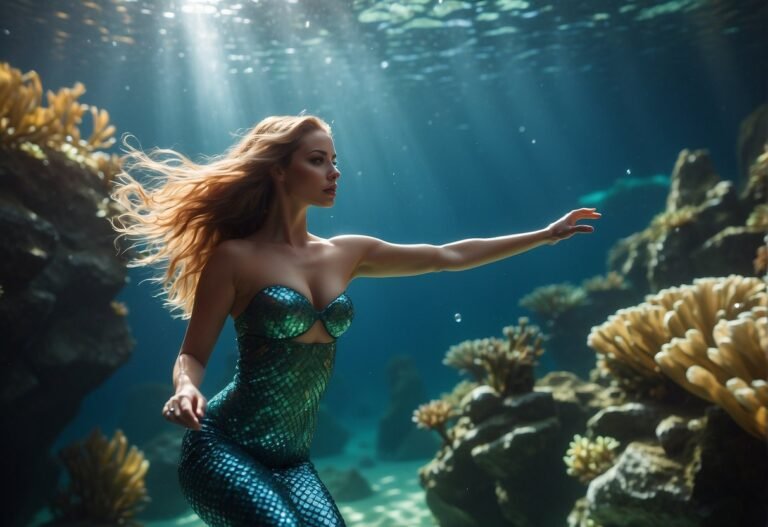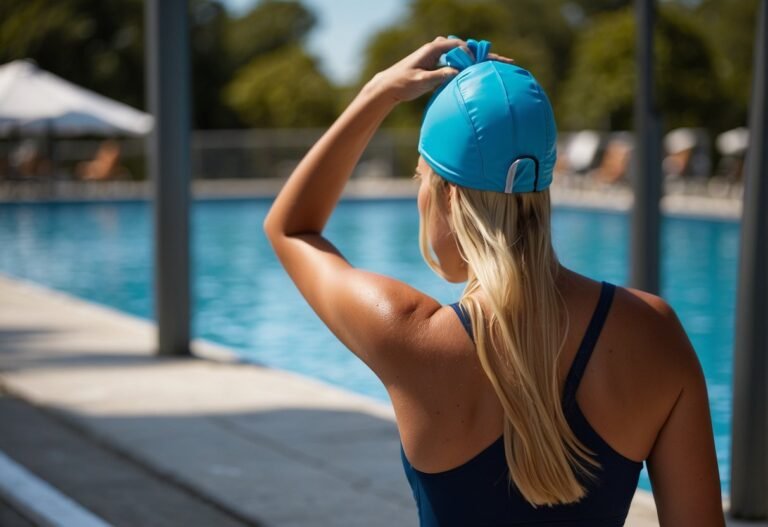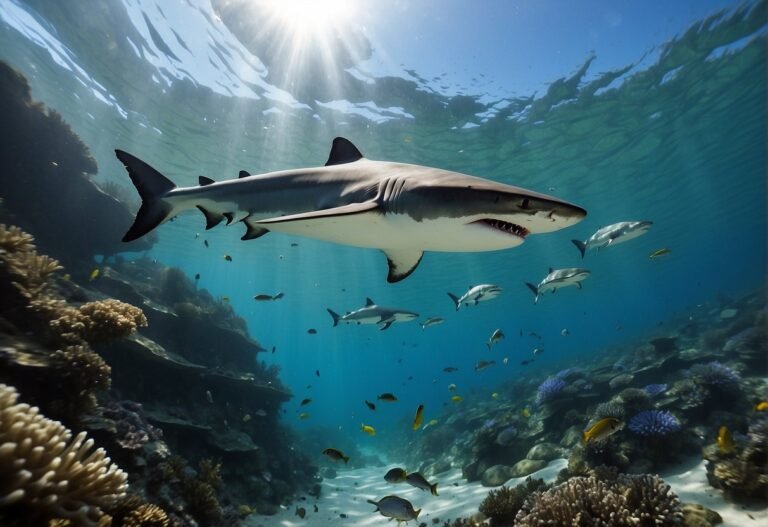Introduction to Competitive Swimming

When I first plunged into the world of competitive swimming, I was struck by the sheer power and speed that athletes command in the water. To someone just starting out, the thrill of the race and the technical precision required might seem overwhelming, but it’s all about the fundamentals and key techniques.
Fundamentals of the Sport
Competitive swimming isn’t just about how fast you can move from one side of the pool to the other; it’s a test of technique, efficiency, and the meticulous honing of one’s form. The sport includes a variety of strokes—freestyle, backstroke, breaststroke, and butterfly—each requiring a unique set of skills.
- Start: Excellence in competitive swimming often hinges on a powerful start. Diving off the blocks with explosive energy can give me that critical edge in a race.
- Training Sessions: Rigorous and structured training is my backbone to achieving maximum performance. A typical session could involve interval sets, ensuring that power and speed are at their peak.
- Dolphin Kick: I incorporate the dolphin kick into my training because mastering this element is pivotal, especially in butterfly and backstroke, to boost my speed through the water.
Key Techniques and Exercises
Focusing on my technique has been essential to my success in competitive swimming. Sharp turns, streamlined positions, and an efficient stroke cycle can make all the difference.
- Speed: Combining power with precise timing allows me to increase my speed, and exercises like sprints and resistance training become my allies in this conquest.
- Technique Drills: I often repeat drills to refine my strokes and turns, committing the proper movements to muscle memory, which is essential for maintaining speed without draining energy.
- Performance: To enhance my performance, including that critical flip turn during a race, I practice consistently, measuring my times and making incremental improvements.
Every dip I take in the pool drives home the understanding that competitive swimming is a blend of raw power and intricate technique—a symphony of muscles and movements executed with precision.
Becoming a Swimm(e)r

Diving into the world of swimming is an exhilarating journey from splashing as a beginner to slicing through water like a pro. As I share my own swimming chronicles, the transformation in strength, energy, and technique unfolds. It’s a story you might see mirrored in your quest through the lanes.
From Beginner to Advanced
Embarking on this aquatic adventure, I remember when I first dipped my toes in. Learning at any age is possible, and as a beginner, I focused on nailing the basics: breath control, buoyancy, and the essential swim strokes. Swimming is a progressive exercise, so I used a checklist of skills to master:
- Breath Control: Crucial for endurance and pace.
- Buoyancy: Helps with efficient movement in water.
- Strokes: Freestyle, backstroke, breaststroke, and butterfly – each requires specific techniques.
Training as a swimmer was more than physical; it required mental persistence. I committed to regular practice, gradually increasing intensity and complexity. The energy and time invested paid off as I transitioned from flailing to flowing, one stroke at a time.
Adult Swimming Lessons
My journey underscores that age is merely a number in swimming. Adult swim classes cater to those who missed the early dive into lessons. Here, I found instructors who specialized in adult learning, understanding the unique hurdles we face, like initial water fear and fitting swimming into a busy schedule.
Lessons were designed with flexibility:
- Private Sessions: For personalized attention.
- Group Classes: For camaraderie and social encouragement.
Swimming as an adult is enriching; it’s never too late to learn. The exercise is gentle on joints yet powerful for building stamina and strength, a perfect blend for adult bodies. Taking the plunge later in life was quite a revelation—I not only improved my health but discovered a passion that knows no age limit.
Swim Workouts and Health Benefits
When I first plunged into the world of swimming, I immediately noticed its incredible impact on my health. Whether you are aiming for a robust workout regime or just a splash to keep fit, the flexibility of swimming workouts caters to everyone. It’s no wonder this full-body exercise is a go-to for men and women looking to boost energy, force, and muscular strength.
Exercise Routines for All Levels
As a swimmer, I begin with warm-up laps, gradually integrating various strokes. I structure my routine to include:
- Freestyle: 4 x 100m at a moderate pace
- Breaststroke: 3 x 100m focusing on technique
- Butterfly: 2 x 100m building strength
By varying intensity and stroke, muscles are engaged without the strain impacting joints, making it a perfect low-impact exercise that suits beginners and pros alike.
Weight Loss and Low-Impact Workouts
Swimming has been instrumental in managing my weight due to its high calorie burn. A brisk one-hour session can torch about 500-700 calories, making it an effective tool for weight loss. Being a low-impact exercise, it’s easier on my body while still providing the resistance needed to strengthen muscles — ideal for those who might find high-impact workouts challenging.
Swimming Equipment and Apparel

Stepping onto the pool deck, I feel a rush of excitement thinking about the range of gear that makes swimming not just possible, but enjoyable. From sleek suits to innovative period swimwear, every piece plays a pivotal role in performance and confidence.
Suit Up for the Pool
When I’m gearing up for a swim, my first pick is a high-quality swimsuit designed for reduced drag and optimal movement. For competitive swimmers, technical suits are a must-have, enhancing hydrodynamics with their tight, compressive fabric. Recreational swimmers might choose comfort and style, with options like:
- Polyester suits: Durable and chlorine-resistant.
- Lycra suits: Snug and flexible.
But before I dive in, I merge style with functionality by tossing on a robe or swim parka for warmth out of the water. As for accessories, here’s a quick list of my essentials:
- Goggles: To protect my eyes from chlorine.
- Swim cap: To minimize resistance and protect my hair.
- Earplugs: For prevention against ear pain.
Innovations in Period Swimwear
For many, the mention of swimming on your period might raise eyebrows, but not anymore. Thanks to innovative period swimwear, I can swim with confidence, knowing I’m protected. These swimwear pieces are specially designed to be worn without pads, tampons, or menstrual cups. They have layers that trap and absorb menstrual fluid, allowing freedom of movement without leakage concerns. Some even pair with an app helping track your cycle to plan swim sessions. This breakthrough in swim technology changes the game for swimmers like me who want no interruptions in their routine.
Swimming During Menstruation
I’ve found that one of the great things about swimming is its inclusivity. It doesn’t pause for gender or natural cycles, so when my period arrives, I don’t let it stop me from diving in. The water welcomes me, beckoning with the promise of strength and endurance, no matter the time of the month.
Handling Your Period in the Pool
It’s essential to prioritize hygiene and comfort when swimming during menstruation. Here are a few methods to manage bleeding and maintain personal care:
Tampons and Menstrual Cups: These are reliable options that offer protection while swimming. They prevent menstrual blood from entering the water, providing a discreet and secure solution.
Swim-proof Pads: While less common, specialized waterproof pads designed for swimmers can also be used.
Dark-Colored Swimwear: Opting for darker swimsuits can help conceal any potential leaks and offer an extra layer of confidence.
Remember, it’s crucial to change your protection method immediately before and after swimming to ensure maximum comfort and hygiene.
Addressing Health and Comfort
Swimming on your period not only is possible but can be beneficial for health and comfort:
Menstrual Cramps: The gentle exercise can alleviate menstrual cramps, as the water’s buoyancy helps reduce physical stress on the body.
Endometriosis: For those with conditions like endometriosis, swimming can be a soothing, low-impact activity that reduces pain.
Mood Boosts: Exercise releases endorphins, which can improve your mood during your period—a time when you might need it the most.
By understanding your body and menstruation cycle, which typically occurs every 28 days, you can engage in swimming without interruption. The key is preparation and using the right protection to ensure that your experience is both hygienic and enjoyable.
Swim Coaching and Mentorship

I’ve seen firsthand how the guidance of a dedicated swimming coach transforms an athlete’s journey. It’s nothing short of powerful. The coach is the guiding light that hones an athlete’s raw talent into record-breaking performances. The excitement I feel when talking about this dynamic fascinates me! Coaches aren’t just instructors; they’re architects of future swimming legends.
Role of a Coach in an Athlete’s Journey
A coach isn’t merely present at the poolside; their role is pivotal in an athlete’s development. In swimming, technique and timing are vital, and it’s the coach who fine-tunes these aspects. For instance:
- Technical Skills: A coach may use video analysis to break down an athlete’s stroke, making adjustments to enhance efficiency and speed.
- Strategic Planning: They design detailed training programs tailored to the athlete’s needs, focusing on both strength and endurance sessions.
- Psychological Support: Coaches are mentors who offer encouragement and strategies to overcome mental barriers, fostering a swimmer’s confidence and competitive spirit.
Developing the Next Generation of Swimmers
My role as a coach extends beyond the current batch of swimmers; I’m deeply invested in nurturing the upcoming talent. My excitement for this task is boundless! Here are specific ways coaches contribute:
- Scouting Talent: Seeking out young swimmers with potential during local meets or swimming exercise sessions.
- Skill Development: Offering specialized clinics and camps to polish the techniques of young athletes.
- Guidance: Teaching the value of dedication, hard work, and the thrill of setting and breaking personal performance records.
In my swimming sessions, I focus on crafting a solid foundation for athletes to build upon, ensuring the future of competitive swimming shines as brightly as the present.
Swimming Records and History
I’m elated to dive into the electrifying realm of swimming records and the legends who’ve made waves in the pool. The tapestry of competitive swimming is rich with astonishing feats, none more so than those etched into the record books. From the lightning-fast laps of Katie Ledecky to Michael Phelps’s monumental medal haul, each record tells a story of human endurance and skill.
World Records and Iconic Swimmers
Swimming has always been about pushing the limits, and world records serve as milestones of human achievement in water. Michael Phelps, with 23 Olympic golds, continuously shattered expectations and his own world records. With a phenomenal career, Phelps became the epitome of swimming excellence.
Another icon, Katie Ledecky, has made her mark with her unparalleled freestyle prowess, setting astonishing times and securing her place at the top. These swimmers didn’t just beat times; they raised the bar for all who followed, redefining what it means to be a champion.
Impact on Competitive Swimming
The ripple effect of world records transcends the individuals who set them—it revitalizes the competition itself. Athletes striving to outdo legends like Phelps and Ledecky elevate the entire sport, creating an ever-evolving spectacle of speed and athleticism. Swimming competitions have thus become a theater where history is made and records, once thought unbreakable, are surpassed by the newest swimming stars.
Understanding Swimming Time Standards
I always get a thrill when I hit my target times in the pool. It’s not just about the rush of competition; it’s about meeting those swimming time standards that benchmark my performance. Let’s dive into what makes these standards vital in the swimming world.
Benchmarking Performance
Time standards in swimming are the quintessential benchmarks that categorically arrange swimmers based on their speed. The beauty of these standards is that they’re defined meticulously for different age groups and event distances, ensuring fairness and precision across the board. To give you an example, if I clock in a 50m freestyle swim at 25 seconds, I’d compare that to the standard for my age group and event. This comparison tells me where I stand among my peers and what I need to target in training.
- Age Group: 10-12 years
- Event (50m Freestyle): 25.00 Seconds
Training with Goals in Mind
Training becomes more meaningful when I have clear goals shaped by time standards. They serve as my guiding stars, helping me construct specific and focused workouts aimed at increasing my speed. For instance, if my goal is to move from a ‘B’ time standard to an ‘A’ in the 100m butterfly, I know I have to slice off a few seconds from my best time. It’s about incremental gains and using these standards as a roadmap to elite performance.
- Current Standard (B): 1:10.00 mins
- Goal Standard (A): 1:07.00 mins
Physics and Physiology of Swimming
Imagine slicing through the water with the grace of a dolphin; that’s the allure of swimming for me. It’s not just about kicking and stroking; it’s a delicate dance between physics and physiology. Let’s dive into the mechanics and the magic!
Body Mechanics in Water
I always marvel at how my body moves in water. To maximize power and speed, I focus on efficient body position and movement. Propulsion comes from the muscles, primarily in the chest, core, arms, and legs. Precise body alignment reduces drag—that pesky resistance working against me. Each stroke I take is a calculated movement, an interplay between strength and form, designed to push water backward and propel me forward.
- Muscle Groups Used in Different Strokes:
- Freestyle: latissimus dorsi, triceps, quadriceps
- Breaststroke: pectorals, biceps, hamstrings
- Backstroke: deltoids, trapezius, calf muscles
- Butterfly: abdominals, obliques, glutes
The Science of Buoyancy and Resistance
When I’m in the pool, I’m battling two forces: buoyancy and gravity. Buoyancy wants to keep me afloat; gravity tries to pull me down. My body position can enhance buoyancy, helping me stay near the surface where I can move faster. The principle of buoyancy declares that the water I displace with my body weighs more than I do, allowing me to float. It’s a strange feeling, almost like flying, as I navigate through this push and pull of forces.
But there’s also resistance, the water’s rebuttal to my forward motion. By refining my technique to decrease this resistance, I can drastically improve my swim times. Understanding the physics of these elements is crucial, as is conditioning my muscles for the exertion they undergo in water. It’s exhilarating – mastering these dynamics for the ultimate swim experience!
Frequently Asked Questions – FAQ
What motivates swimmers to keep competing?
The sheer passion for the water, the thrill of pushing limits, and the sweet taste of victory keep swimmers diving back in. It’s about personal bests, team spirit, and the exhilarating rush of a close race.
How do swimmers prepare for a big competition?
Dedication meets discipline as swimmers embrace rigorous training, meticulous diet, and mental fortitude. It’s a journey of countless laps, early mornings, and the unbreakable belief in one’s own potential.
What’s the key to success in competitive swimming?
Success blooms from consistency, perseverance, and a love for the sport. It’s in the fine balance of technique, power, and the unwavering drive to outdo oneself. Every stroke, breath, and turn counts in the quest for excellence.
As I dive into the depths of competitive swimming, I’m reminded of the courage, determination, and heart it takes to chase the wake of excellence. Thank you for swimming through this journey with me. Your thoughts and experiences are like ripples in the water—please share them in the comments below. Let’s keep the conversation flowing!






